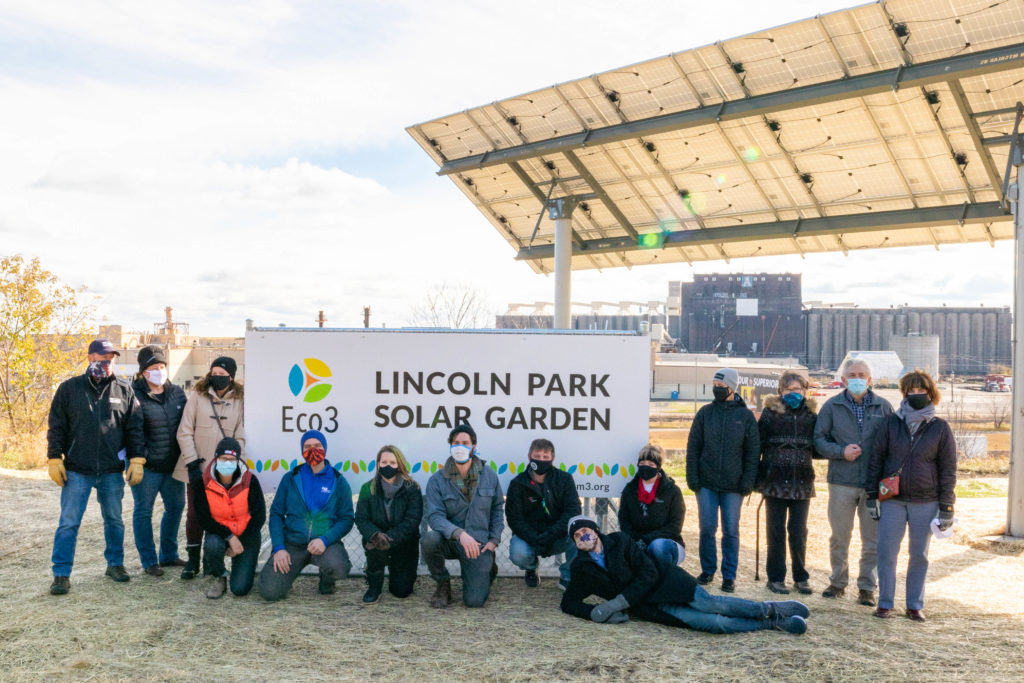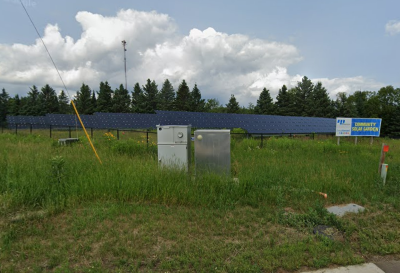

This post is part of our ongoing series about the Inflation Reduction Act. For more information, see: Funding Our Energy Transition; Get Ready Today; Heat Pumps; Weatherization; Appliances; Windows and Doors; and Home Solar.
The Inflation Reduction Act (IRA) is the largest piece of climate legislation in US history. It has the potential to have enormous impacts on energy costs, pollution, and climate change. The federal government will be making huge investments into energy efficiency projects and programs. There will also be energy efficiency funding available from the Minnesota state government. One goal of these programs is to help everyone make their homes energy efficient.
Making a home energy efficient is a complex multi-step process. This post is about ways for everyone to get involved with solar, including renters and folks who live in apartment buildings. Note: Community solar is a great option to get in on solar energy if you live in an apartment, a townhome, or a rental property. If you do own a home that you can put panels on and you are looking for options to make that more affordable, we suggest looking into solar co-ops as well as tax incentives, as mentioned in this post about home solar. In fact, Solar United Neighbors currently has openings for a solar co-op in the Duluth and Arrowhead areas.

Solar energy is one of the most popular forms of clean, renewable energy, and it has the potential to help reduce pollution and increase energy security in our state. But not everyone can put solar panels on their roof. That’s where community solar comes in.
What Is Community Solar?
Community solar is a way for individuals to promote solar energy and benefit from its production. Here’s how it works: individuals, civil offices, and/or organizations buy into a solar garden in their community. Everyone who purchases a spot in the garden benefits from the energy produced. Usually, the solar gardens are built and managed by energy utility companies. In those cases, the transactions are often managed through your monthly utility bill. You might see a charge for your space in the solar garden, accompanied by a discount on your power bill thanks to the energy produced there.
The cost of participating in community solar varies from state to state, and from company to company. Some community solar customers see overall savings on their utilities. Other customers may see higher bills, but still choose to participate so they can support renewable energy. There are also many different models for community solar pricing; some require higher up-front costs, others rely more on monthly rates.
One of the benefits of joining community solar is that it requires no physical changes to your home. So whether you rent or own your home or live in a free-standing house or an apartment building, you can participate. The only catch is that there are not many community solar gardens, so it can be difficult to buy in.
There are two community solar gardens currently in operation in Duluth. The first is the Lincoln Park Solar Garden. This solar array does not have public shares available, but instead supports the MAC-V veterans home and the Eco3 Energy Fund. Learn more about this project on our solar garden webpage. The other is the Minnesota Power Solar Garden at the intersection of Rice Lake Road and Arrowhead Road. The City of Duluth purchased 40% of the output and the remainder was purchased by Minnesota Power customers. There are currently no open spots available at the Minnesota Power Solar Garden. But there are many more community solar gardens on the horizon, thanks to upcoming federal investments.
The Inflation Reduction Act
Our other stories on the IRA have focused on tax credits and rebates that will be available to individuals. But, there will also be large investments of grant funding available to states, Indigenous tribes, local governments, and nonprofit organizations. A portion of those grants will be for solar projects, including community solar gardens. So, even though there are no openings to join community solar projects in Duluth today, we can expect to see many more opportunities becoming available over the next ten years.
Take Action
Moving to solar and other renewable energy sources reduces pollution and stabilizes energy costs. We want to ensure that everyone can benefit from renewable energy, whether or not you can install solar on your own roof. While we wait for IRA grants to become available for more community solar projects, there are actions we can take today to bring more solar to Duluth.
- Learn more about renewable energy in Duluth and take action at the Energy Production Actions page of the Duluth Citizens’ Climate Action Plan.
- Apply for a grant through Minnesota Power’s Low-Income Solar Program. This funding can be used to build solar arrays that benefit low-income Minnesota Power customers. The next deadline for applications is March 15, 2024.
- Visit Solar United Neighbors to learn what to consider when shopping for community solar and learn more about initiatives bringing solar to communities across the country.
Solar energy is a great way to lower energy costs over time, reduce pollution, and leave a more stable climate for future generations. However, going solar is not the only way to achieve these goals! One of the most effective steps we can take is making our homes and buildings more energy efficient. Whether you own or rent, live in a single-family house or an apartment, it all starts with an energy audit. Sign up for your audit today!